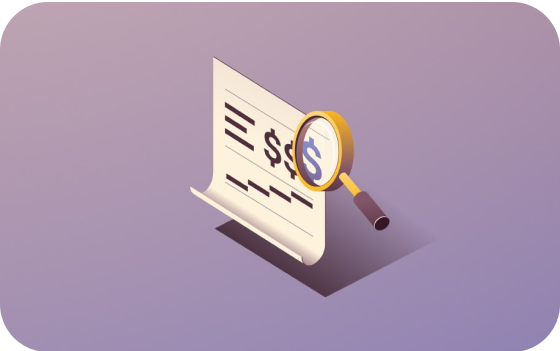9 best vulnerability management tools & systems
Dans cet article
Network vulnerabilities pose a major risk to any business operating online today. Unpatched software flaws, misconfigurations, and other security gaps provide entryways for cybercriminals to breach systems and steal sensitive data. For IT and security teams, proactively identifying and closing these doors before attackers find them is critical—especially considering that the average cost of a data breach reached $4.88 million in 2024, a 10% increase from 2023.
This article explores the top vulnerability management tools and systems to help your organization dramatically reduce cyber risk. Whether you're an IT manager at a small business or overseeing security at a large enterprise, effective vulnerability management is essential to your defense strategy.
What is vulnerability management?
Vulnerability management is a comprehensive strategy for discovering, assessing, prioritizing, and addressing security weaknesses in systems. It provides a continuous process to find and fix security weaknesses before they can be exploited. The goal is to remediate vulnerabilities and improve your organization's overall security posture.
A typical vulnerability management lifecycle includes these stages:
Discovery: Finding vulnerabilities across all systems and assets
Prioritization: Determining which vulnerabilities pose the greatest risk based on severity, exploitability, and asset value
Assessment: Analyzing the root cause and potential impact of each flaw
Reporting: Documenting discovered issues and remediation plans
Remediation: Patching software, correcting misconfigurations, and applying other fixes
Verification: Validating that vulnerabilities have been fully resolved
Monitoring: Checking for any changes or new vulnerabilities on an ongoing basis
Vulnerability management tools automate much of this process. Vulnerability scanners continuously scan IT environments to detect a wide range of security issues, from missing patches to default passwords. These tools match system configurations against databases of known vulnerabilities (called CVEs) to pinpoint risks, using CVSS for vulnerability scoring to help determine severity.
Leading tools then contextualize vulnerabilities with threat intelligence and asset data to highlight the most pressing issues. This enables IT teams to prioritize remediation of vulnerabilities with the highest likelihood and potential impact of exploitation.
5 benefits of vulnerability management tools
Conducting vulnerability management manually would be nearly impossible for most organizations. The process is too time-consuming, tedious, and prone to human error. Here are five key advantages of leveraging vulnerability management software:
1. Proactive risk reduction
A robust vulnerability manager and patch management system allows you to find and fix security gaps before attackers can take advantage of them. By taking a proactive approach to mitigate risks and reduce your attack surface, you significantly lower the chances of experiencing a costly data breach or operational disruption due to compromised systems.
2. Continuous security visibility
IT environments are highly dynamic, with new devices, applications, and users constantly added. Cloud and mobile computing only increase this complexity. Vulnerability management tools provide unified, real-time visibility of your asset landscape and risk state. This immediate awareness is invaluable compared to periodic, point-in-time assessments. While these tools offer measurable data, they should be integrated into an ongoing, long-term security management strategy rather than relied upon in isolation.
3. Efficient remediation
The best vulnerability management tools dramatically streamline the process of triaging and resolving security flaws. They arm IT teams with actionable intelligence to focus on the highest-risk, most impactful issues first.
Scanners provide detailed information on each vulnerability, including severity level, attack vector, and remediation guidance. This eliminates the need for manual research. Prioritization based on real-world threat activity and your unique environment ensures the most effective allocation of resources.
4. Strengthened compliance
Most IT security regulations and industry standards require vulnerability scanning to some degree. PCI DSS, which governs payment card data, mandates internal and external scans at least quarterly and after any significant network changes.
Vulnerability management tools help satisfy these compliance requirements through automated assessments mapped to specific controls. They generate audit-ready reports to demonstrate adherence.
5. Measurable risk reduction
Robust reporting is a hallmark capability of leading vulnerability management tools. Customizable dashboards and visualizations provide a consolidated view of discovered vulnerabilities, remediation progress, and overall risk levels. This gives CISOs and IT leaders clear metrics to track and communicate the impact of their efforts.
5 key features to look for in vulnerability management systems and solutions
With so many vulnerability management tools on the market, how do you determine which one is right for your organization? Here are five essential capabilities and characteristics to look for:
1. Comprehensive asset discovery
Effective vulnerability management starts with building a complete, accurate inventory of all assets in your environment. This should span on-premises servers and desktops, cloud instances, containers, mobile devices, IoT, and virtual machines. This comprehensive visibility helps organizations strengthen their cybersecurity defenses across the entire IT environment.
Leading solutions automatically discover assets without prior knowledge or configuration. They accommodate diverse deployment models, combining active network scanning, agent-based monitoring, and passive traffic analysis. This ensures assets are accounted for even if they're not connected to the corporate network or have short-lived cloud workloads.
2. Actionable prioritization
The average enterprise faces thousands of vulnerabilities at any given time. Attempting to patch everything is not only impractical but counterproductive. Mature vulnerability management solutions enable you to zero in on the most critical, exploitable issues.
Prioritization should factor in granular vulnerability details like severity scores and exploit availability. But it must also account for unique, business-specific context like an asset's criticality, exposure, and compensating security controls. The most advanced tools tap real-world threat intelligence to highlight vulnerabilities being actively exploited in the wild.
3. Streamlined remediation workflows
Finding vulnerabilities means little if you can't fix them efficiently. Top-tier tools provide built-in capabilities to bridge the gap between security and IT operations. This includes detailed remediation guidance, patch deployment, and service ticket creation.
Automated workflows ensure prompt handoff and tracking of remediation tasks. Granular role-based access control enables vulnerability management across distributed teams while enforcing least privilege. Intuitive dashboards display remediation coverage and velocity to monitor progress.
4. Flexible reporting and analytics
Robust reporting is crucial to understand your vulnerability landscape, demonstrate risk reduction, and satisfy auditors. Tools should provide both pre-configured and customizable dashboards that non-technical stakeholders can easily digest.
Flexible filtering and drill-downs allow you to view metrics by business unit, asset group, severity level, age, and more. Trending visualizations illustrate improvement over time. Meanwhile, detailed CSV exports enable further analysis and sharing key findings.
5. Integration with broader ecosystem
Vulnerability data offers immense value when married with other security and IT management functions. APIs allow you to unify vulnerability insights with SIEMs, ITSMs, CMDBs, and more. This powers use cases like:
Correlating vulnerability context with security alerts to speed investigations
Informing patch prioritization based on business service mapping
Enhancing threat hunting with attacker's view of exposures
Strengthening compliance by aligning control issues with technical flaws
Native, pre-built integrations make this easier and more reliable compared to custom scripting. Evaluate prospective tools based on their proven integration with your existing tech stack. Also, look for an extensive partner ecosystem to accommodate future additions.
9 best vulnerability management software tools and solutions
With so many vendors in the market, choosing the right vulnerability management tool for your organization can be daunting. We've compiled a list of 10 top solutions to help narrow your search:
1. Rippling
Rippling's integrated platform combines vulnerability management with broader IT security and employee system management. Through its SentinelOne integration, it provides comprehensive endpoint protection and vulnerability detection across your entire organization, with the unique advantage of unifying identity and access management (IAM), mobile device management (MDM), and threat management in a single platform.
Key features
Real-time device security monitoring and management
Unified access control and permission management
Automated employee system provisioning and deprovisioning
Integration with SentinelOne's industry-leading security capabilities built directly into Rippling
Benefits
Reduces security gaps through automated access management
Streamlines IT operations with unified platform approach
Prevents unauthorized access with zero-trust policies
Provides comprehensive visibility across all endpoints
Centralizes fleet management and security monitoring in one interface
2. CrowdStrike Falcon Spotlight
CrowdStrike's cloud-native Falcon platform offers its Spotlight module for continuous vulnerability assessment. Leveraging the same lightweight agent as CrowdStrike's leading endpoint protection, Spotlight requires no additional infrastructure. The solution is enhanced by CrowdStrike's advanced threat intelligence and AI capabilities, enabling vulnerability prioritization.
Key features
Asset discovery and monitoring across on-premises, cloud, and remote endpoints
Contextualized risk scoring and prioritization using real-world threat intelligence
Customized remediation workflows to unify IT and security teams
Benefits
Harnesses CrowdStrike's threat intelligence to proactively identify trending vulnerabilities being exploited in the wild
Eliminates scanning performance overhead and complexity
Accelerates patching through direct assignment and tracking
3. Cisco vulnerability management
Cisco acquired vulnerability management innovator Kenna Security in 2021 to complement its SecureX platform. Kenna's solution taps predictive modeling and rich threat intelligence to cut through the noise and prioritize remediation.
Key features
Integration with over 19 threat intelligence feeds
Advanced algorithms for data science-based prioritization
Single centralized dashboard for vulnerability and asset information
Benefits
Enables early prediction of vulnerability exploitation before attacks occur
Improves collaboration between security and IT teams through unified data visibility
Integrates with Cisco Secure Endpoint for vulnerability detection and prioritization
4. Microsoft Defender vulnerability management
Microsoft has expanded Defender for Endpoint to include standalone vulnerability management. The solution offers both agent-based and agentless scanning across cloud, on-prem and hybrid assets.
Key features
Native discovery and assessment of Windows, Linux, macOS, and mobile endpoints
Prioritization based on real-world threat landscape and organization-specific factors
Built-in remediation workflows and application control to act faster
Benefits
Enhances XDR/SIEM platforms by integrating with Microsoft Defender and Sentinel
Leverages Microsoft's vast endpoint install base and threat intelligence
Eliminates periodic scans through real-time continuous monitoring
5. Rapid7 InsightVM
Rapid7's InsightVM stands out for its intuitive interface, automation capabilities, and built-in remediation projects. The cloud-powered solution aims to eradicate vulnerabilities faster.
Key features
Lightweight endpoint agent for unified data collection across InsightVM, InsightIDR, and InsightOps
Active risk score for dynamic vulnerability prioritization
IT-integrated remediation projects with tracking and collaboration tools
Benefits
Clear, actionable data for both security and IT teams
Eliminates tedious network scanning tasks and performance impacts
RESTful API and 40+ third-party integrations to maximize value
6. Intruder
Intruder offers a modern approach to vulnerability management centered on noise reduction. Its continuous network monitoring aims to surface the handful of critical issues that matter most.
Key features
Emerging threat scanning and Rapid Response for critical vulnerabilities
140,000+ infrastructure and 75+ application vulnerability checks
Automatic scanning of newly detected targets
Benefits
Intelligently prioritizes results by business context
Proactively scans for emerging threats 24/7
Only charges for active targets with Smart Recon
7. Qualys VMDR
Qualys provides vulnerability management, detection and response (VMDR) with focus on measuring, communicating, and eliminating risk across hybrid environments. The platform is well-suited for large-scale enterprise environments, offering comprehensive coverage across cloud, on-premises, and IoT infrastructure.
Key features
Automated asset discovery and categorization across IT, OT, cloud, and IoT
TruRisk prioritization leveraging 25+ threat intelligence feeds and 80k+ signatures
Real-time vulnerability and misconfig detection
Benefits
Streamlines remediation through automated patching workflows
Reduces security vulnerabilities through intelligent TruRisk scoring
Enables accurate auto-assignment of tickets through ITSM integration
8. Aikido Security
Aikido provides an all-in-one vulnerability management platform focused on combining multiple open source scanners with automated triaging.
Key features
10-in-1 scanner suite including CSPM, SCA, SAST, DAST, and container scanning
AI-powered SAST Autofix with confidence level indicators
Automated triaging with instant deduplication and noise reduction
Benefits
Reduces remediation time through automated deduplication
Provides comprehensive coverage by combining multiple open source scanners
Integrates directly with development workflows and tools
9. Tenable
Tenable offers an enterprise vulnerability management solution built on its Nessus technology, focused on finding and closing critical exposures.
Key features
Continuous asset discovery and assessment for known/unknown assets
Built-in threat intelligence from Tenable Research
AI-powered exposure prioritization combining vulnerability data and threat intel
Benefits
Provides comprehensive visibility across dynamic cloud and remote environments
Accelerates response through automated risk-based prioritization
Enables proactive threat response with rich intelligence sources
Enhance your business data security with Rippling
While effective vulnerability management is a core pillar of IT security, many organizations struggle to coordinate efforts across traditional boundaries. Rippling helps streamline this through its unified platform for employee data and system permissions management.
Through its partnership with SentinelOne, Rippling provides endpoint detection and response capabilities that monitor for threats and vulnerabilities. This includes detection of malware, fileless attacks, and living off the land techniques that traditional antivirus might miss. When threats are detected, automated remediation actions can be triggered.
By integrating with Rippling's identity management, IT teams can automatically provision, deprovision, and monitor access levels. Any suspicious activity like attempted logins from unmanaged devices triggers an instant alert. You can enforce zero trust policies if vulnerability scanning detects endpoint risks.
Most importantly, Rippling connects your people's data with your systems. For example, if an employee changes roles, their permissions are automatically adjusted to close any privilege-related vulnerabilities. This unified approach helps reduce security gaps that can arise from outdated access rights.
Vulnerability management tools FAQs
What types of vulnerabilities do vulnerability management tools detect?
Vulnerability scanners identify a wide range of security weaknesses, including:
Missing operating system and application patches
Insecure default configurations like open ports, default credentials, and unnecessary services
Misconfigurations that violate security best practices
More advanced solutions also detect web application flaws like SQL injection and cross-site scripting, compliance gaps, and even indicators of breach.
Are vulnerability management tools suitable for small businesses?
Absolutely. In fact, small businesses face disproportionate cyber risk due to limited resources and expertise. While full-featured enterprise platforms may be overkill, there are many effective vulnerability management tools tailored for smaller organizations. Cloud-based solutions eliminate infrastructure costs and complexity. Streamlined interfaces and pre-set configurations enable lean IT teams to realize value quickly.
How often should vulnerability scans be performed?
Most experts recommend running vulnerability scans at least monthly, with many organizations opting for weekly or continuous monitoring to catch emerging threats. While some compliance standards only require quarterly scans, more frequent assessment provides better security coverage.
What is the difference between vulnerability scanning and vulnerability management?
Vulnerability scanning is just one component of vulnerability management—it's the technical process of identifying security weaknesses in systems and applications. Vulnerability management is a broader program that includes scanning plus prioritizing risks, coordinating remediation efforts, and tracking the entire lifecycle of security gaps.
Clause de non-responsabilité
Rippling et ses filiales ne fournissent pas de conseils fiscaux, comptables ni juridiques. Ce document a été préparé à titre d’information uniquement ; il n’est pas destiné à fournir des conseils fiscaux, comptables ni juridiques, et ne doit pas être utilisé comme tel. Vous devez consulter vos propres conseillers fiscaux, comptables et juridiques avant de vous engager dans une quelconque activité ou transaction connexe.
Hubs
Author
Marisa Krystian
Responsable senior du marketing de contenu, IT
Forte de plus de dix ans d’expérience, Marisa est une experte du marketing de contenu spécialisée dans les technologies de sécurité et de milieu de travail. Elle aime le café noir et sait toujours où placer les virgules.
Voir Rippling en action
Faites davantage d’économies, automatisez les tâches fastidieuses et prenez de meilleures décisions en gérant les ressources humaines, l’informatique et les finances en un seul endroit.
























































































